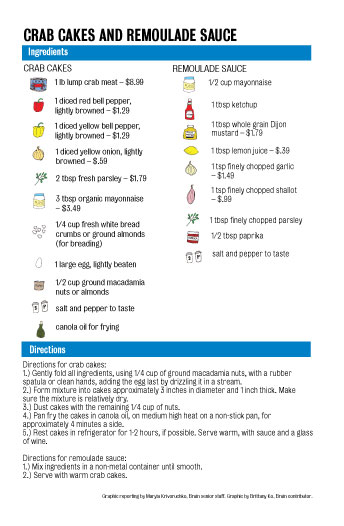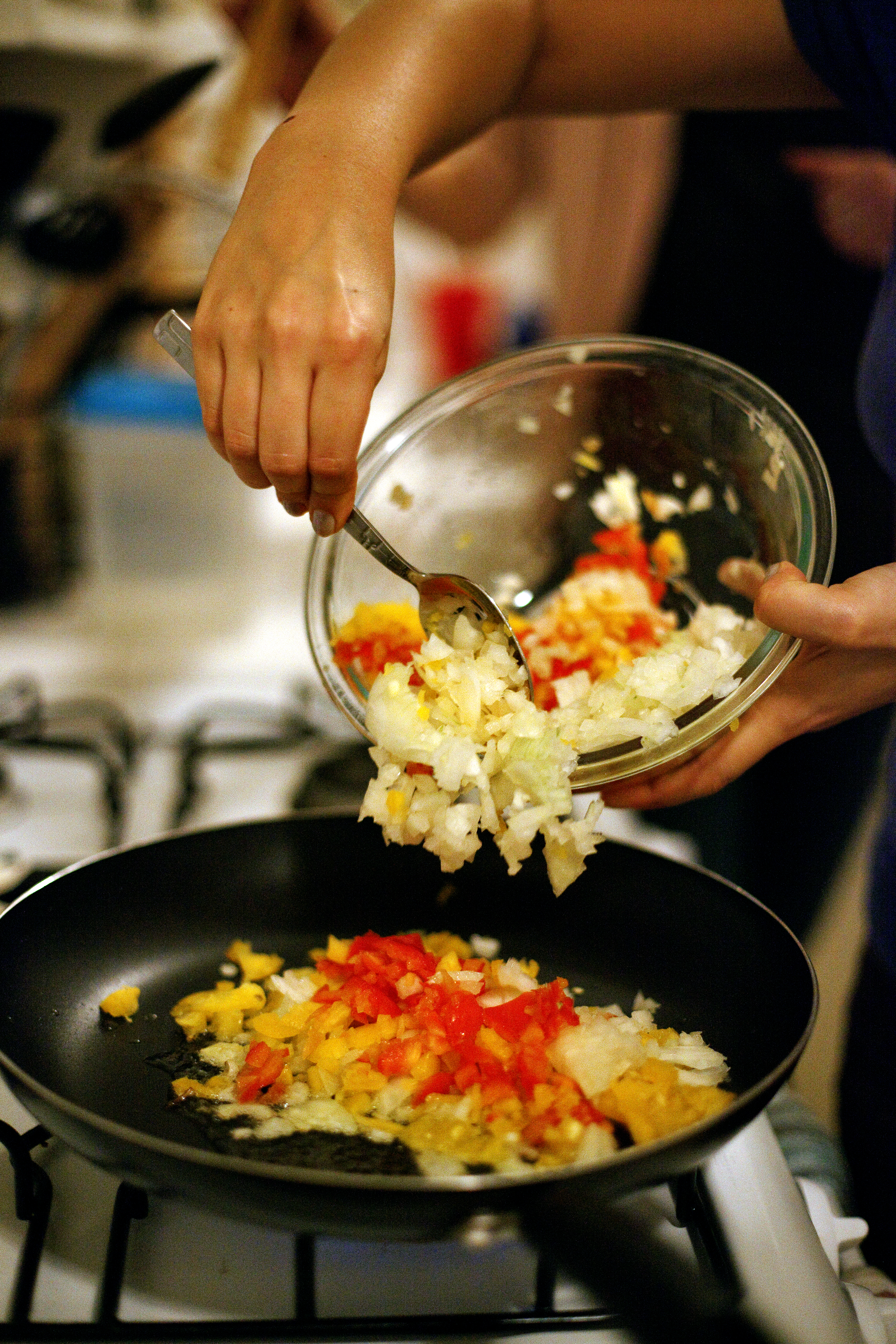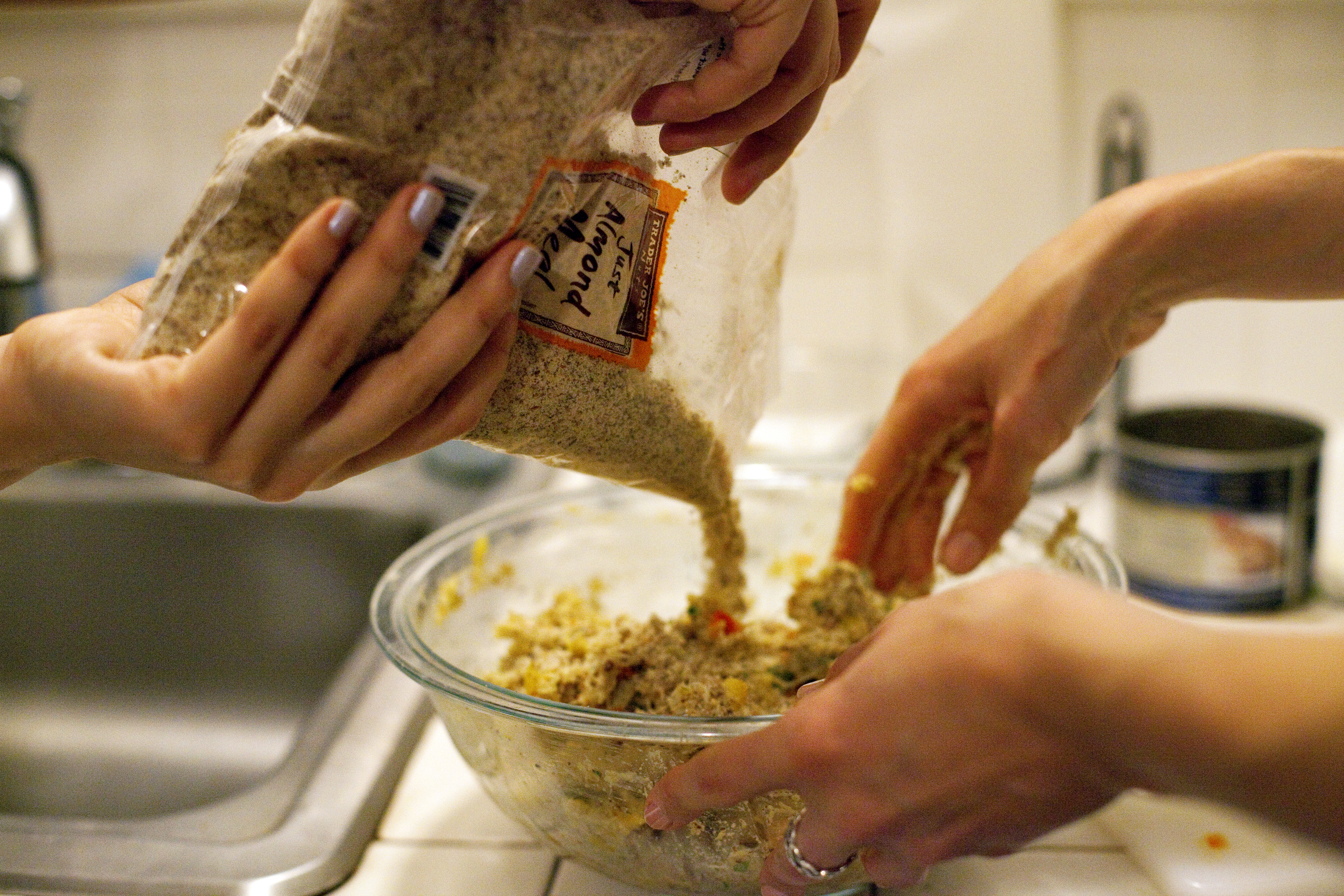


Schoenbrunner displays the finished product.


Fourth-year international development studies student Anna Schoenbrunner assisted columnist Maryia Krivoruchko in the kitchen to make crab cakes with remoulade sauce, a recipe of her parents’ colleague. The crab cakes are made with lump claw meat, macadamia nuts, ground almonds, bell peppers and various spices.
Cooking is so much less stressful when you’re not by yourself.
Let’s rehash: I’m an OK cook, but I don’t practice much. I make simple meals sporadically, like most college kids these days. For a little over a quarter, I’ve been writing a column in which readers send me a recipe, the results of which I bring to them to try. Some of the recipes included a Persian tangerine chicken stew, Pakistani dessert Rasmalai, baklava, pumpkin pie and orzo.
I learned a lot, but practice without guidance only gets you so far. This week, and hopefully for the rest of the quarter, I had an experienced cook come into my kitchen to physically help.
My first sous-chef, fourth-year international development studies student Anna Schoenbrunner, has been cooking since she was young, working through making complex meals with her parents from the start. The second she arrived in my cramped kitchen to help make her parents’ colleague’s signature crab cakes with remoulade sauce, it was evident that she was no novice.
Schoenbrunner brought her own portable vegetable chopping contraption, plus some extra macadamia nuts (which I incidentally forgot to buy.)
When getting the ingredients, I looked through the fish aisles of Trader Joe’s, but the thick claw meat came refrigerated, in a can from Chicken of the Sea, which just made me think of Jessica Simpson. I asked a worker for its hidden location, and he greeted me as “crab-girl,” wishing me luck and saying that they just don’t make crab cakes here the way they do in Maryland, where he used to live. I promised the elderly man that I would make him proud, and I think I did, with the help of my sous-chef.
First, during the prep work, Schoenbrunner showed me the right way to dissect a bell pepper by taking the core out first, rinsing the seeds, cutting it into strips and finally using the efficient plastic hand chopper to dice. She demonstrated each technique, and I replicated, which actually made the process more efficient than my typical cutting of fingers with a dull knife.
Then I got some South Campus education: I finally learned how olive oil is different from canola after 21 years of ignorance. Canola oil has a higher smoke point (the point at which it breaks down into glycerol and free fatty acids). The glycerol is then broken down into acrolein, which is toxic. Using oils with high smoke points such as canola when frying has a lesser risk of carcinogens being released, which is bad for health and taste. Olive oil is best for browning the vegetables, while canola is better for frying the crab cakes. I also found out that you can’t fry garlic with onions and bell peppers because of their different cooking temperatures.
We formed an assembly line and made the cakes by rolling the mix into little patties and breading them with macadamia nuts until we ran out of the “breading.” Ground almonds (which can be bought as almond meal in a packet at Trader Joe’s) are a fine substitute to roll the crab cakes in, but they don’t have the same crunch as macadamia nuts.
After heating the canola oil in two large pans, Schoenbrunner placed the first batch of breaded crab cakes on the stove. They didn’t stay together quite perfectly and needed some more ground almonds mixed in (a substitute for bread crumbs, which must be dried overnight in order to soak up moisture). Schoenbrunner said that she has not yet mastered the perfect frying time, when the cakes are completely cooked through but not burned ““ the most difficult part of the recipe.
Then I made the sauce, which used mayonnaise, ketchup, a spicy whole grain dijon mustard, garlic and shallots (that neither Schoenbrunner nor I know the exact distinction between) and some various spices.
We turned the oven to low heat and kept the crab cakes warm inside until all of the batches were done, allowing paper towels to soak up the extra grease from the cakes. The final result was professional ““ the taste was rich, the texture crunchy but not overbearing and the spice just right. The cold, spicy sauce complemented the slight kick of the crab cakes, which looked appetizing with different colored bell peppers mixed throughout. The cakes are surprisingly filling and go well with some white wine.
It was one of my best recipe attempts by far, all because I had some good guidance.
If you think you can teach Krivoruchko a thing or two for a future column, e-mail her a recipe to mkrivoruchko@media.ucla.edu.
Ҭ
“Fire in the Kitchen” runs every Thursday.
